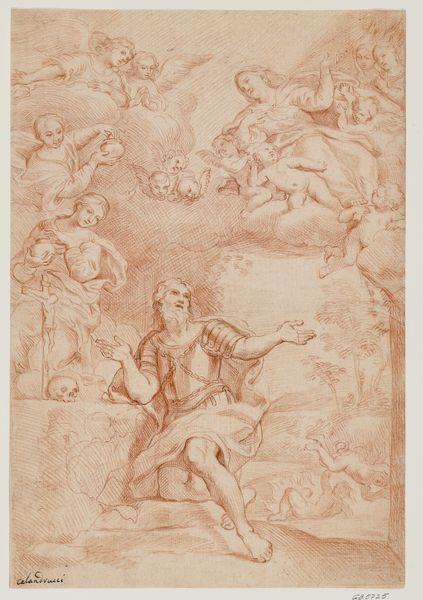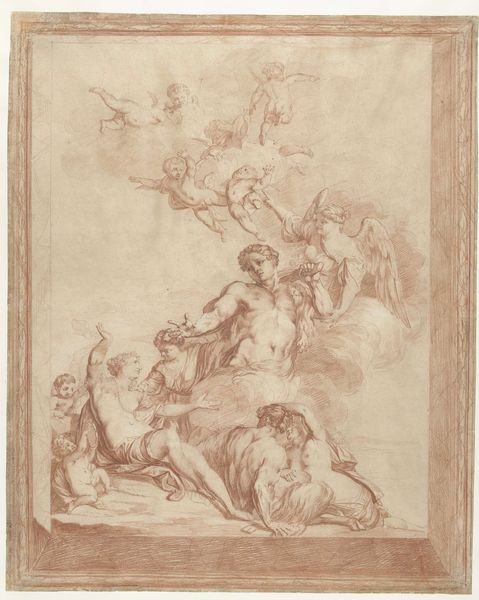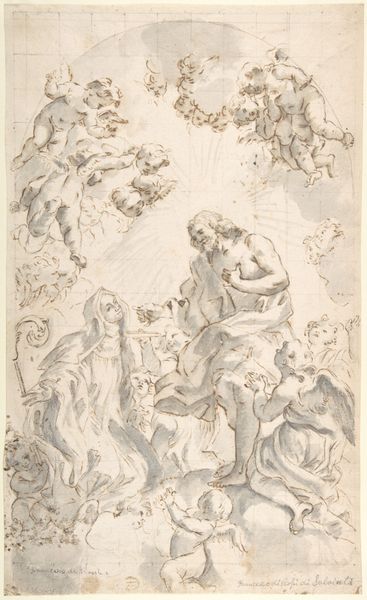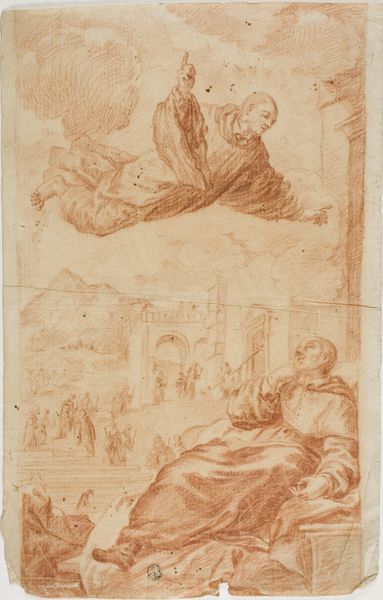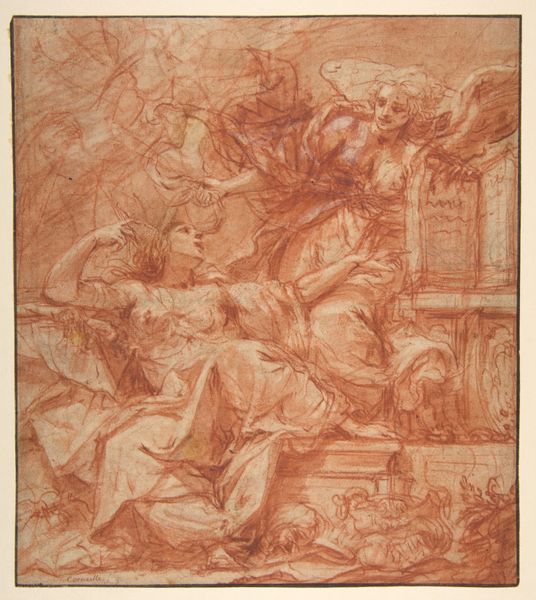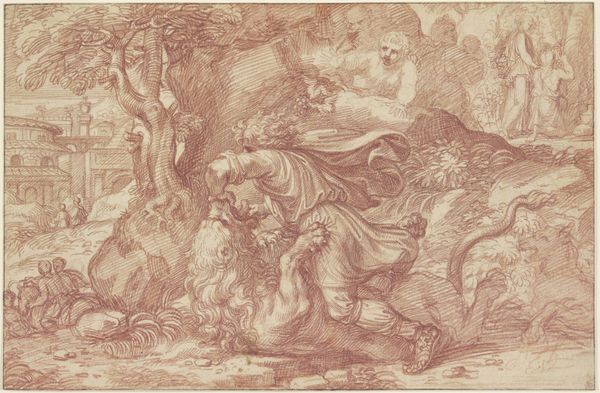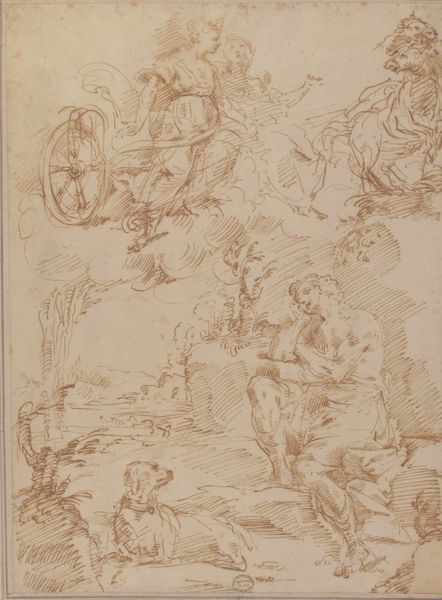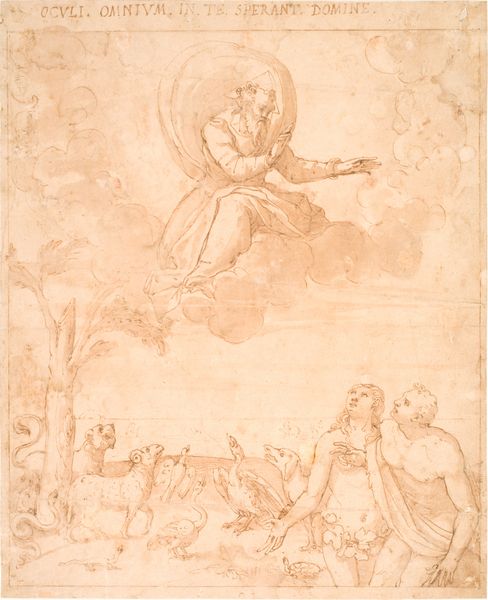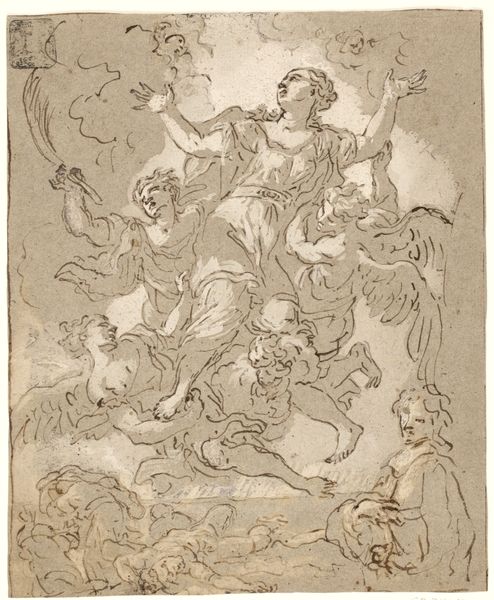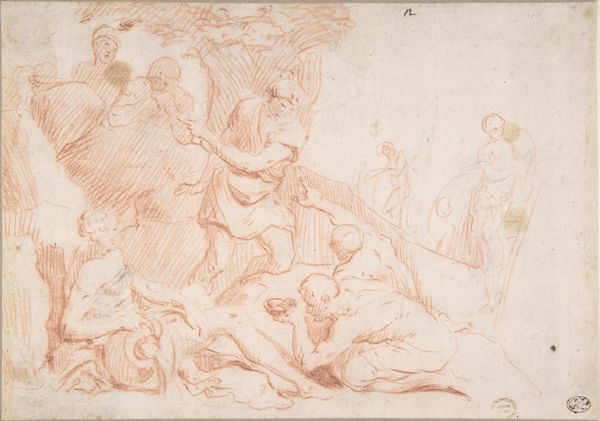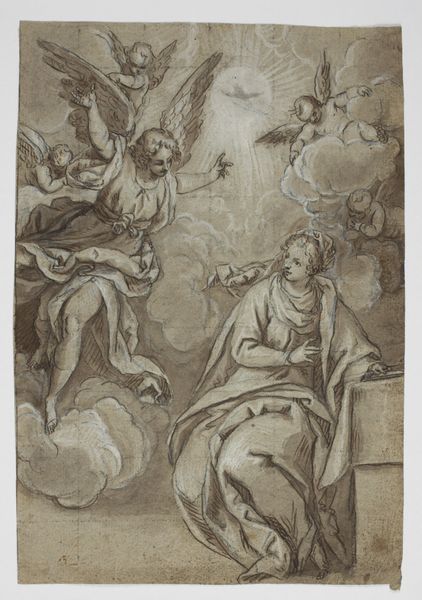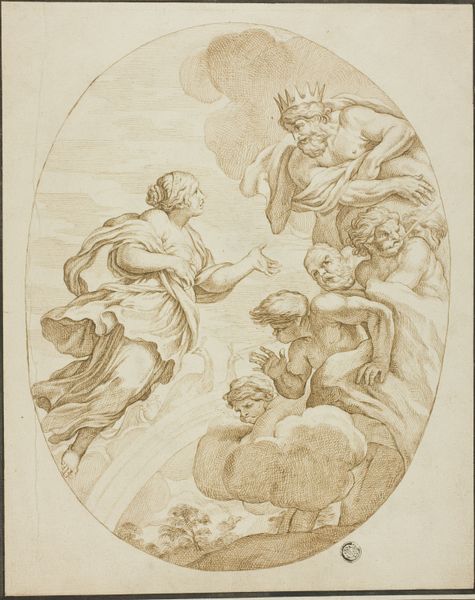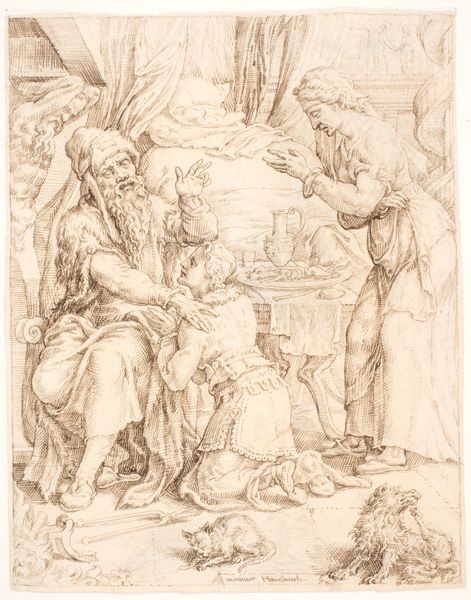
drawing, print, paper, pen
#
portrait
#
drawing
#
narrative-art
# print
#
landscape
#
figuration
#
paper
#
11_renaissance
#
pen
#
history-painting
#
italian-renaissance
Dimensions: sheet: 9 7/16 x 7 7/8 in. (24 x 20 cm)
Copyright: Public Domain
Editor: This drawing, “God Appearing to Moses,” made between 1627 and 1637 by Pierre Brebiette, utilizes pen and paper to depict a well-known biblical scene. What strikes me is the incredible detail achieved with what seem like simple materials. It almost feels like looking at a tapestry in its intricacy, yet it is created with the humblest materials. I’m curious, what stands out to you in this piece? Curator: What’s compelling here is not necessarily the biblical narrative itself, but the very *making* of the image, its production. Consider the accessibility of pen and paper during the Renaissance. Brebiette democratizes religious art through these commonplace materials, blurring the line between high art and craft. Editor: So, it's the accessibility that holds significance? The everyday quality of it? Curator: Precisely! Think about the social context. While grand frescoes and sculptures were commissioned by the elite, drawings like this potentially circulated more widely. The materiality points to a different kind of consumption. Note how the cross hatching is repeated within the sky, the flora, and even the livestock. This speaks to an artistic shorthand born out of printing making perhaps? Where does it disrupt typical representations of the divine? Editor: That’s fascinating, I hadn’t considered the social implications of the medium itself. Now that you mention it, I see how using readily available materials shifts the focus away from the artist's individual genius towards the act of creation. How might it influence the reception of the work by its audience? Curator: Exactly! It makes me question the original intent of the piece, challenging preconceived notions about art as exclusive. Is it then a more inclusive and participatory experience? Editor: This has completely shifted my perspective on the work! It’s more than just a religious scene; it’s a testament to the power of accessible art and its potential to reach wider audiences. I'm keen to explore further connections between labor, materials, and artistic meaning. Curator: Indeed. It shows that even a seemingly simple drawing can reveal profound insights into the relationship between art, society, and the means of production.
Comments
No comments
Be the first to comment and join the conversation on the ultimate creative platform.
